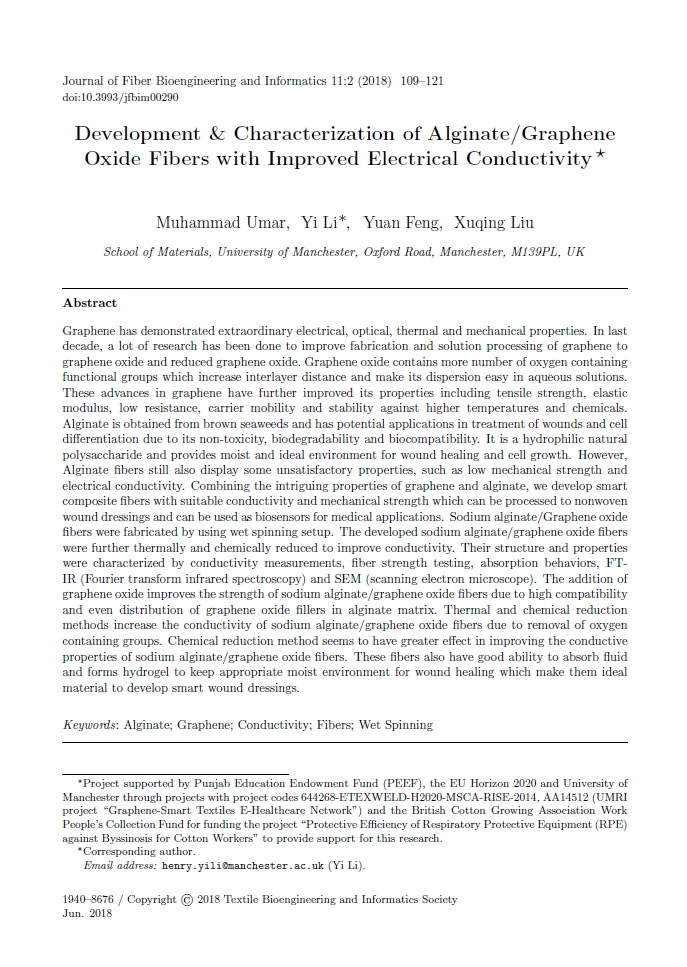Journal of Fiber Bioengineering and Informatics  2018, Vol. 11 2018, Vol. 11  Issue (2): 99-111 DOI: 10.3993/jfbim00290 Issue (2): 99-111 DOI: 10.3993/jfbim00290 |
|
|||
| Development & Characterization of Alginate/Graphene Oxide Fibers with Improved Electrical Conductivity | |||
| School of Materials, University of Manchester, Oxford Road, Manchester, M139PL, UK | |||
|
||||||||||||||||||||||||||||||||||||||||||
PDF Preview
|